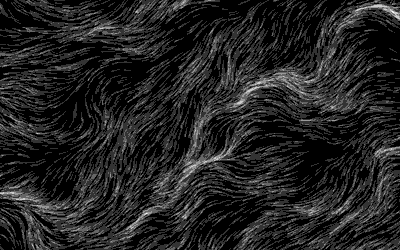For this composition, I will be tackling the idea of: “Chaos from the point of view of a computer algorithm is random generation.”
Random Generation is a computational algorithm designed to generate a sequence of numbers or symbols that can not be reasonably predicted better than by random chance. The success of a random generation algorithm is determined by the number of times, a particular number of symbol is repeated when a result is requested. The less repetition, the more successful the generator.
Processing was used to create a random number generator. The range of numbers that the function was allowed to generate was limited to prevent large variations. The outcome of the generator was then mapped onto particles in a particle system. The random numbers produced would determine a particle’s X and Y direction, as well as its travel velocity. The particles were then given a trail and allowed to move freely.
Multiple simulations were run with varying particle sizes, different trail lengths and differing random number ranges.

The results were then captured as stills before being overlaid upon each other.
The opacity and appearance of the trail was manipulated to create the final result.






